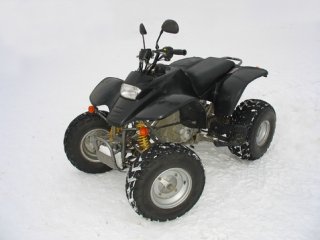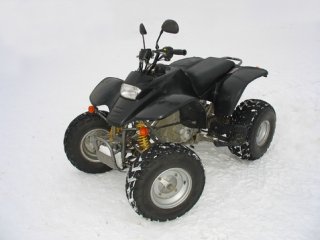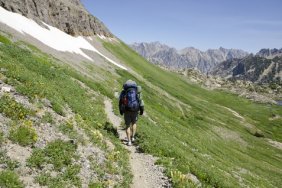 Taking the rig out for a four wheel expedition in the summer is fun. There’s sun, dust and a chance to get a heck of a farmer’s tan. However, there’s no reason to abandon the off road excitement once winter rolls into town. Snowy conditions offer a great opportunity to test your driving skills, expand your working knowledge of your vehicle and see some of your favorite trails in a whole new light.
Taking the rig out for a four wheel expedition in the summer is fun. There’s sun, dust and a chance to get a heck of a farmer’s tan. However, there’s no reason to abandon the off road excitement once winter rolls into town. Snowy conditions offer a great opportunity to test your driving skills, expand your working knowledge of your vehicle and see some of your favorite trails in a whole new light.
Heading out during the winter months can present a variety of trail conditions ranging from mud and newly exposed obstacles to snow and ice. Being prepared for these conditions is the groundwork to having a safe, enjoyable journey that won’t leave you out in the cold.
First and foremost, winter ‘wheelers should prepare for their trip by mapping out a course and, excuse me while I hop up on my soap box, tell someone where they’re going. This is the last time of the year that you want to be stuck without gas, or in a snow bank, with nobody looking for you. From what I’ve heard, hypothermia is the pits and frost bite can take a toe or two. Local authorities with the land management agencies will be able to give you an idea of the trail conditions, while it is also important to check predicted weather. Any area that receives snow is typically capable of suffering from quick-shifting weather conditions and again, being caught in a blizzard can leave a big ol’ negative mark on your whole trip.
Considering the time of year and type of snow is critical for a successful snowy trail venture. Early season, powdery snow is typically easier to push aside, however that same snow may be deceiving in depth and hiding harsh obstacles that could damage your vehicle. Walk around a bit before embarking on the trail and don’t hesitate to have someone walk ahead as the spotter. Typically, most people pick the guy that they don’t really like for this job. I digress…
Later in the season, heavy snow may have built into thick drifts that are best traversed by high flotation tires at very low gears. These wider tires allow the truck to, in essence, float across the top of a drift where thinner tires equipped with chains may simply tear up the snow and cause an impassable condition for vehicles further back in a caravan.
Speaking of tire chains, there comes a time when they may be the best option for traction in hard packed or icy conditions. Although the intuitive action is to air down tires when approaching snow, due to increased traction from wider surface area, tires should always be fully inflated when running chains. As terrain changes, evaluate the need to continue using chains, as their presence can greatly reduce traction on rocky surfaces and cause the potential for damage if caught on a stump or other unexpected piece of trail junk.
On top of everything else to consider, cold conditions can be rough on both you and your rig. Dressing appropriately for the conditions will make the trip far more fun, and packing an extra set of clothes can never hurt. Keep your vehicle warm by checking to make sure that ice and snow have not become lodged in the engine compartment of your vehicle and clearing out any large pieces that may have snuck in. Severe damage can be done to radiators and engine blocks faced with the task of handling heat and extreme cold simultaneously. For this reason, it’s best to keep the engine running as much as possible to maintain semi-constant heat while traversing the snow and muck.
In the long run, every season brings its own trials and tribulations to four wheel off-road adventures. Being prepared for winter wheeling will bring a little horsepower to your winter wonderland while giving you a great excuse to beat off cabin fever for a few hours.








